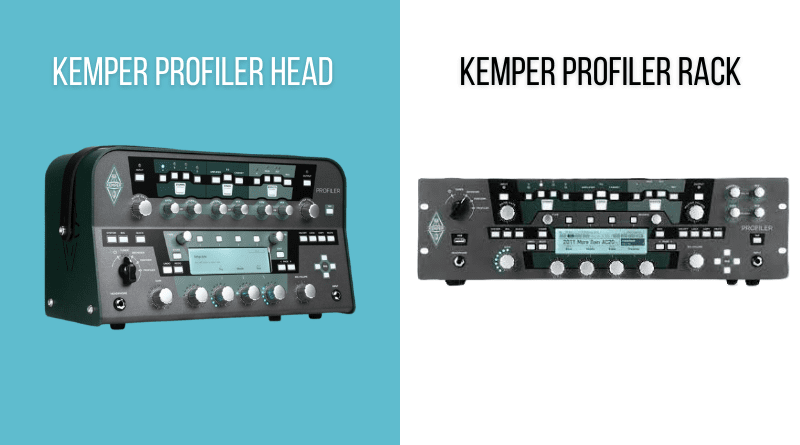Back when digital modelers first appeared with products like the Behringer V-amp, and the early Line 6 products such as the original Pod and Toneport, digital amplifier modeling wasn’t taken particularly seriously. The signal processing didn’t sound great and it was not seen as anything other than a means to practice at 2 am quietly so as not to endure the wrath of the sleepy roommate.
This sentiment started to shift in 2008 with the release of the Axe FX, the first time we had really seen digital modeling be able to hold its own against a tube amp. With bands like Metallica starting to embrace this technology, it legitimized its claim as a tool that can hold its own in a professional music setting.
Over the decade that has followed, we’ve now seen digital modelers explode in popularity, with more people than ever retiring their traditional tube heads in favor of a more compact high-quality modeler.
Read more about our review process.
Contents
- Why the Kemper?
- What Types of Kemper are Available?
- Will my Tone be Different Depending on Which One I Purchase?
- Will I Miss Out on Anything if I Buy One Over the Other?
- So What IS Different?
- Powered vs Non-Powered
- What if I Don’t Want to Use it With a Cab?
- Is There a Price Difference Between the Versions?
- Final Thoughts on Kemper Profiler Rack Vs Head
Why the Kemper?
Right now we are spoiled with tons of great digital amplifier products, from the Axe FX and Line 6 Helix to the newer Quad Cortex from Neural (check out our Kemper VS QC shootout here).
But the Kemper stands out from the average modeler because it isn’t technically a modeler at all – It’s considered to be a ‘Profiler‘. Instead of just giving you a selection of amplifiers that have been created by the manufacturer, you have the ability to take your own favorite rig and profile this yourself into your Kemper and use it as an accurate digital clone of your setup.
This makes it extra appealing for musicians who already have a favorite amp/cab setup that they wish to ‘digitize’ and be able to conveniently have with them anywhere they go.
These ‘profiled’ models can then be shared through Kemper’s ‘Rig Manager’ software, where there are currently hundreds of thousands of amplifiers that have been profiled by people from all over the world and have been shared for any Kemper owner to download and use for free.
What Types of Kemper are Available?
Right now there are 3 versions of the Kemper available on the market. The head (also affectionately referred to as the ‘lunchbox’ by some), the rack-mountable version, and also a floor pedal version known as the Kemper Stage. The difference between the Kemper Stage is fairly obvious, so let’s take a closer look at the Rack and Head versions.
Will my Tone be Different Depending on Which One I Purchase?
The first thing to establish is that the technology behind both of these is identical. So the way they profile amplifiers, the available effects, impulse responses, and the final tone that they produce is all exactly the same. So there is no difference in tone or response between them.
They also both use the same file format when it comes to both amp profiles, impulse responses, and stored rigs in the Kemper Rig manager software. This means all profiles can be transferred and shared seamlessly between the two without issue.
Will I Miss Out on Anything if I Buy One Over the Other?
They both come with 200 ‘built in’ amplifier profiles and 72 effects. Plus, more effects are being made available constantly through firmware updates, which both versions receive simultaneously. With them recently adding emulations of all the most popular ‘screamer’ pedals such as the OD808 and the Precision Drive.
Additionally, they have all the same I/O including S/PDIF, USB, ethernet. You will not lose out on anything regardless of which one you purchase.
So What IS Different?
The main difference between the two is physical. The original lunchbox version is the tallest at 217mm in height, whereas the rack version is squashed down to 139mm. But, the rack version, in order to adhere to the 19’’ rackmount standard, is 483mm in width, while the lunchbox is just a little slimmer at 378mm. The lunchbox is also about 0.3kg heavier than the rack version on both the powered and unpowered versions.
Because of its slightly smaller form, the rack version is missing a few effect mod knobs. The USB input is on the front instead of the back, and a couple of the knobs don’t have the handy LED strips around them. All extremely minor differences that result in no real loss of functionality. One final thing to note is that the lunchbox version originally launched in white, and due to popular demand they soon released a sleek-looking black version. But the rack version was only ever released in black as there just was not the demand for a white rack version.
Powered vs Non-Powered
Both the head and rack versions can be purchased with or without a 600W Class-D power amp built in, adding about 1.2kg to the overall weight of both versions but not changing the dimensions of either unit.
So if you plan on using this with a cabinet you can save some space by having the power amp built into the Kemper. But it’s also worth noting that there are many affordable rack-mountable power amps available if you wish to use an external one and keep the Kemper purely as a pre-amp.
What if I Don’t Want to Use it With a Cab?
If, like many bands are doing these days, you just want to run the Kemper straight to the front of house and use in-ear monitors, or even to a powered FRFR speaker there is no need for a power amp and you may as well save on the cost and weight.
Lastly, Kemper has their own FRFR speaker available called the Kemper Kone, specifically designed and voiced to work in conjunction with Kemper’s profiling technology. The Kone has a 200-watt power amp already built into it, so if you plan on using that you do NOT need to buy a powered version.
Is There a Price Difference Between the Versions?
In most stores both the unpowered rack and head versions retail for the same price, so you are free to pick one based purely on form factor. The powered versions also retail for a few hundred dollars more, but again are the same for the head and rack versions.
Final Thoughts on Kemper Profiler Rack Vs Head
In general, many people consider the lunchbox version a little better suited for studio use as the larger front panel and easier to reach I/O ports can provide a little more accessibility. But the downside of that is the larger size may make it more difficult to travel with as you need a specialized case to fit its unusual size. The rack, although smaller in form factor, will fit in any standard 19” 2 unit rack case and can be mounted alongside any existing rack gear you have with ease.
Which one of these will be best suited for you will come down to your intended application with your Kemper. But the differences between them are small enough to where you’re not going to miss out on any significant amount of functionality regardless of which one you choose.
You might also like these related articles


